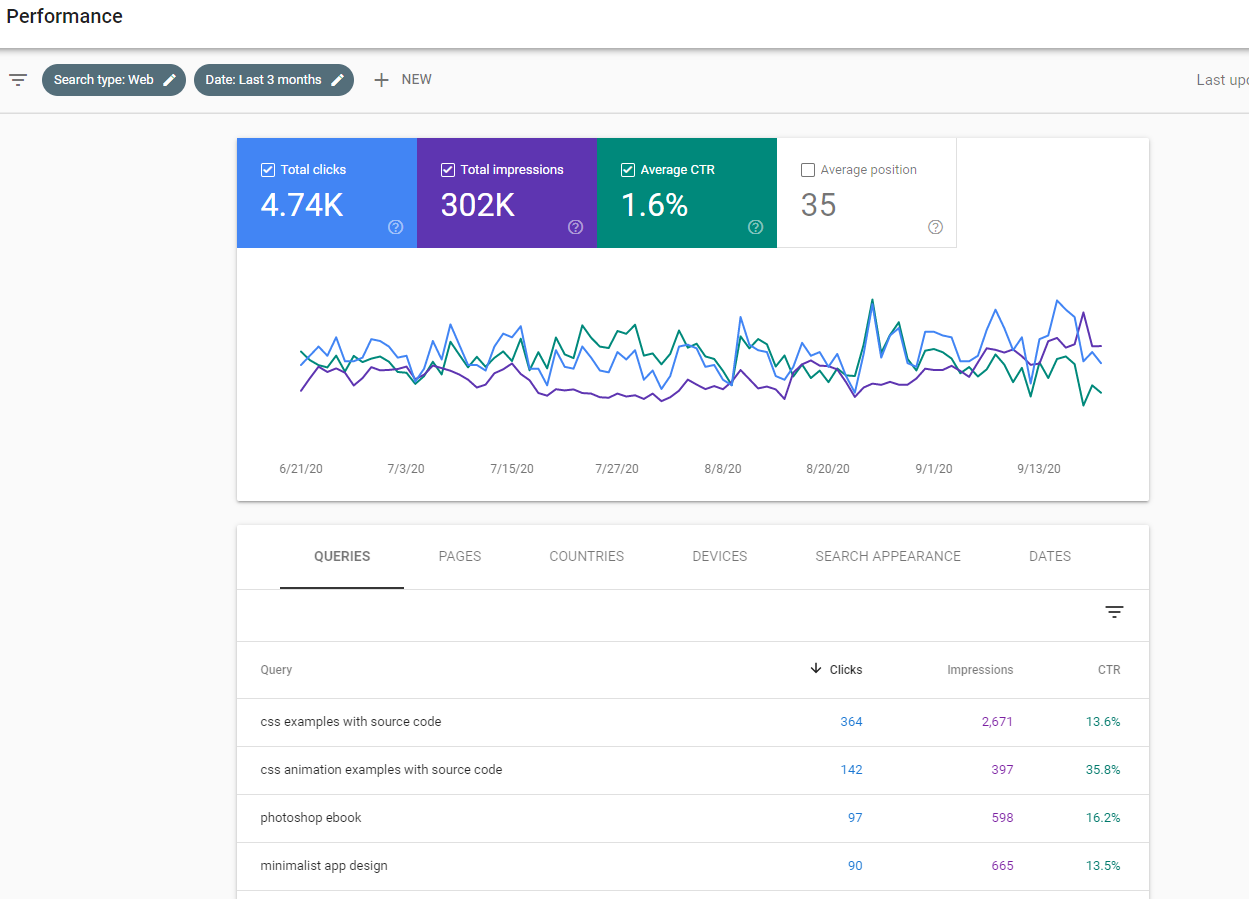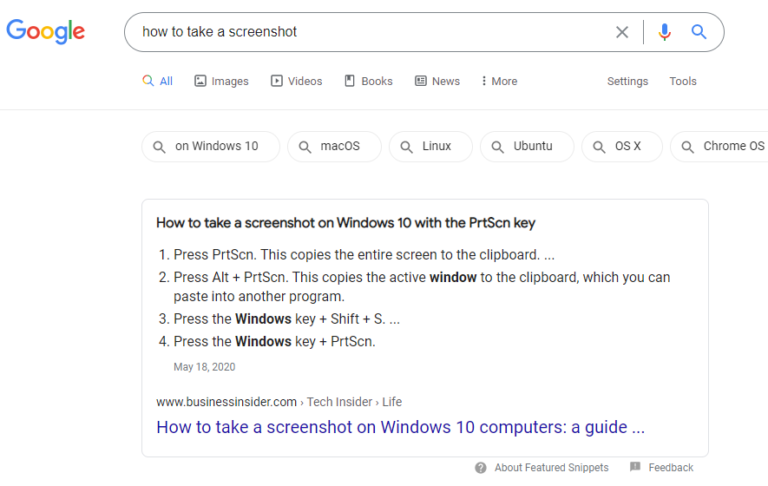21 Oct 12 Proven Steps to Boost Your Organic CTR in Google via @AdamHeitzman
What if there is a way you could generate more organic traffic to your website without having to improve your rankings?
Is it building more links?
No.
Is it creating more content?
No.
It’s organic search click-through rate (CTR) optimization.
What Is Organic CTR?
Organic click-through rate (CTR) is defined as the ratio of searchers who click on an organic result in the search engine results pages divided by the total number of searches (impressions) for that term.
Organic clicks ÷ impressions = Organic CTR
Why Does Organic CTR Matter?
Improving your organic CTR is important because:
- It means more traffic for your website without necessarily having to improve your ranking.
- The share of clicks being distributed from Google has been on a continual decline due to SERP features and the fact that Google is making paid ads look less like paid ads. With this, you need to squeeze out every bit of possible traffic you can.
How Do You Do Improve Organic CTR?
As an overview, below is a fantastic diagram by SEO consultant Aleyda Solis that clearly spells out the thought process of how to go about improving poor CTR:
What to do to improve Poor CTR in SERPs besides improving rankings 👇 pic.twitter.com/fuBJugMqjY
— Aleyda Solis (@aleyda) September 11, 2020
Taking much of this into account as well as a few ideas that I’ve had success with, I’ve broken down 12 ways to boost your organic click-through rate below:
1. Identify Your Lowest Organic CTR Content So You Know Where to Start
You can easily visit your Google Search Console and download an analysis of your traffic.
- Navigate to Performance.
- Make sure Queries is selected.
- Make sure Average CTR is checked.
Below is a screenshot of what you’ll see:


I typically like to sort the queries by Impressions then start notating which queries have a lower CTR than my site average.
(In this case, the site average CTR is 1.6%.)
So I would be looking at queries that are driving that average down and figure out what to do to improve them.
2. Fix Any Keyword Cannibalization
A large issue that we see with clients is what we often call keyword cannibalization, where we see lots of landing pages all optimizing for the same keywords; and thus, spreading out any organic clicks.
As you complete this scan of your content, identify where this may be occurring and consider consolidating or differentiating the keywords you are trying to rank for so that your CTR can be dedicated to one page instead of ten.
Here are two helpful resources to help identify and clean up keyword cannibalization issues:
- How to Find and Fix Keyword Cannibalization Issues (in Seconds) (Ahrefs)
- How to Spot and Fix Keyword Cannibalization (SEMrush)
3. Get Creative With Your Titles
This is the big one because if you want people to click, they aren’t seeing much other than your title in the SERPs.
There are many different ways to improve your titles.
Avoid Heavy Title Tags
These are not only boring and don’t foster as many clicks, but even search engine bots are starting to figure out that the title wasn’t really written for readers.
Utilize Brackets in Your Titles
A study by HubSpot found that brackets in headlines increased clicks by 40%.
Try a Numbered List
We added a number in this post for a reason. Research by Conductor found that numbers boost CTR by 36%.
Utilize the Current Calendar Year
Brian Dean went into great detail about how he increased his organic traffic by 652% in 7 days.
A big part of this study was including the calendar year on his content as well as utilizing numbered lists.
Always Test Your Headlines
You can test these in your PPC ads, Facebook posts, and other social ads, or use a headline analyzer (see next step).
Don’t be afraid to change your titles often to find the one that really works (more on this later)!
4. Use Descriptive URLs
There is quite a bit of evidence out there suggesting that a descriptive URL matters – and it makes sense.
People would rather click on searchenginejournal.com/blog/5-tips-for-success than searchenginejournal.com/product=success/12345?.
Always be sure that you optimize the slug when creating new pages, and if you need to change the URL structure of your website completely, do so in an SEO-friendly fashion.
5. Optimize Your Description
Put thought into why people are seeing your listing in the first place, and make sure your description is relevant.
Utilize emotional words (sometimes called “power words” such as “secret” or “instant”) and follow similar guidelines you would with a title.
If your title has a number in it but not a calendar year, considering adding the calendar year in the description.
The most checkboxes you can check between the headline and description the better.
6. Utilize Structured Markup
I’m sure you saw this one coming because we are going down the line of what you see when looking at a SERP result: schema markup.
Common schema types include:
- Organization.
- Person.
- Local Business.
- Product & Offer.
- Breadcrumbs.
- Article.
- Video.
- Event.
- FAQ.
All these different variations of markup help bring more visibility to your listing in the SERP which in theory should entice more clicks.
7. Leverage PPC Ads for Organic CTR
One of the most underutilized ways to quickly improve CTR with a proven approach is to leverage PPC.
Identify a keyword that has a low CTR but you rank high enough for and create a paid search ad for it.
Not only will taking up more real estate increase the likelihood they visit you, but you are able to quickly test different headlines and descriptions to identify a winner.
Then apply that copy to your organic listing.
8. Get Emotional
Incorporating emotion captures people’s attention.
Don’t be clickbaity but also don’t be afraid to use emotional words like “proven,” “instant,” “amazing,” “secret,” “best,” etc.
Utilize this in your titles or description for that extra oomph!
9. Use Positive or Negative Sentiment
The use of either positive or negative sentiment has proven to driver higher CTR, however many titles still have neutral sentiment.
There are several free tools out there but one I like to use is Monkey Learn.
10. Apply Title Case
In title case, major words are capitalized, and most minor words are lowercase.
In sentence case, most major and minor words are lowercase.
This small difference can mean the difference in more clicks.
Using title case is often attributed with higher CTRs because it makes the heading stand out.
11. Structure Content for Featured Snippets
Featured snippets are rich search results that appear as a box of content on search engine results pages (SERPs).
They are fields of information that attempt to provide answers related to a user’s query.
Featured snippets are usually positioned at the top of SERPs below the paid ads and above other organic search results.


A study by HubSpot found that the CTR for their high-volume keywords increased by over 114% when the results appeared as featured snippets.
When researching the SERPs of your primary keyword, look to see if a featured snippet appears.
If so, it’s important that you structure your content similarly to how the featured snippet is displaying their answer.
For example: if it shows a list-based featured snippet, you know you need to make sure your content also has a numbered list format.
If it is an answer box, you need to make sure you answer the question at the top of the page in a clear and concise way.
For more information read Search Engine Journal’s Google Featured Snippets Guide.
12. Improve Page Load Time
Although at first glance it may not seem like a way to improve organic CTR, making sure your site loads as fast as possible is a key factor.
After all, a click only counts if the visitor actually lands on your website.
If your page load time is lagging, the click may never occur.
Bonus: Consider Other Engagement Metrics
While you’re analyzing your content, consider other engagement metrics, such as bounce rate.
If you find that CTR is pretty high, but bounce rate is as well, then your content isn’t doing what it should be for readers.
Make sure your content is easy to scan with headlines and bullet points (yet still in-depth information), consider video, and always think about the aesthetic of the page and the content.
The more valuable your content is, the more likely you are to earn backlinks.
A Quick Word: How Does Google Prevent Click Fraud?
You may very well be thinking “this is all great, but I will just click on the organic search results for my company over and over again to increase the CTR and then see all of these benefits.”
I have spent some time thinking about this question, and this was the best article I found on the subject.
I agree with these SEO professionals when they say “Google Ads has been fighting click fraud for 15 years and they can easily apply these learnings to organic search.”
Organic Google CTR has been crucial to overall success with clients when it comes to rankings as well as conversions.
While conversions don’t happen easily without rankings (what most people focus on), rankings don’t mean much without traffic that brings conversions (what people tend to forget).
Caring about organic Google CTR = keeping your eye on the prize!
More Resources:
- 5 Ways You Can Really Steal Organic Clicks from Industry Giants
- How Can I Recover My Lost SEO Keywords & Organic Traffic?
- 5 Ways to Convert Organic Traffic Into Qualified Leads
Image Credits
All screenshots taken by author, October 2020
Sorry, the comment form is closed at this time.